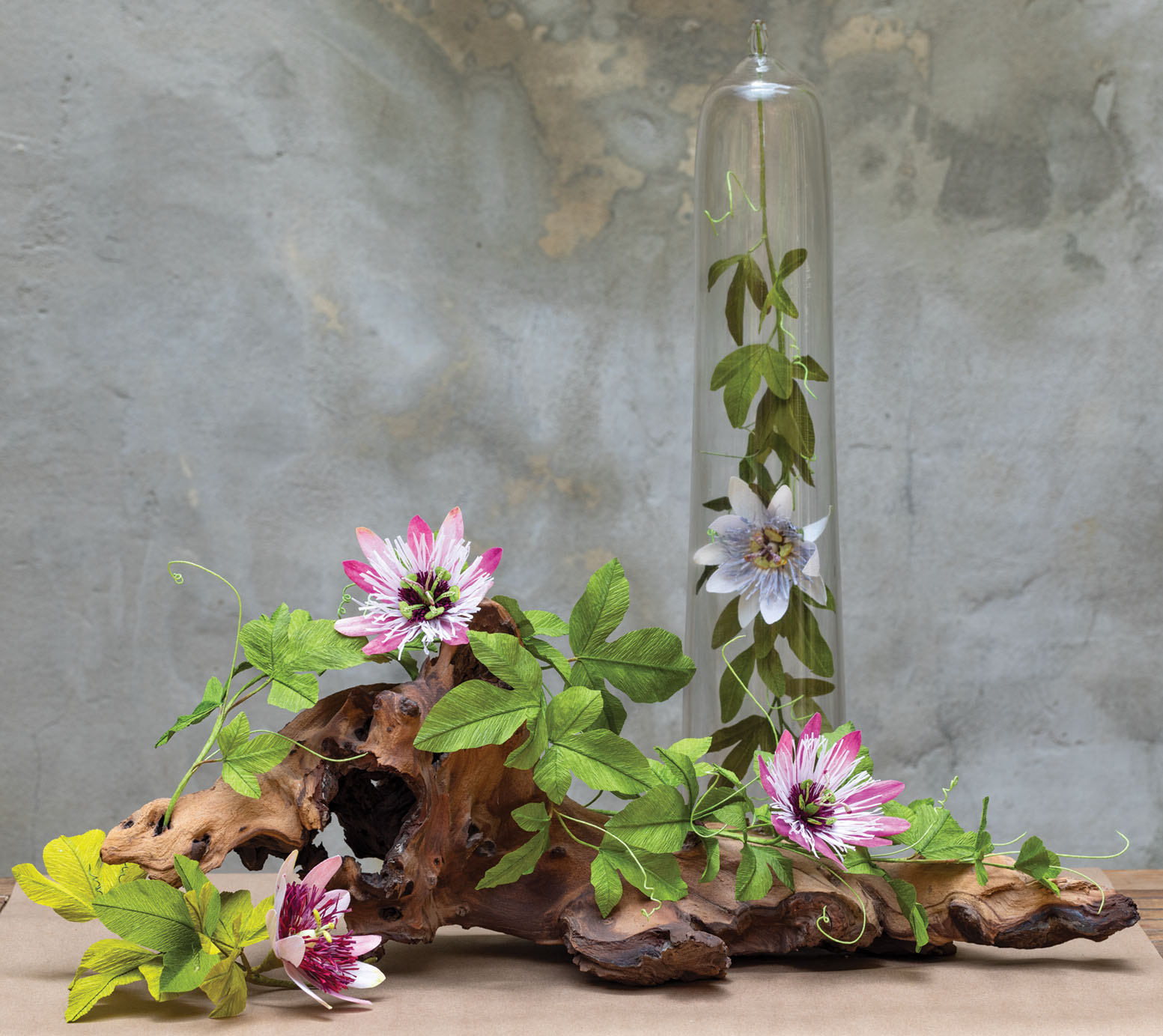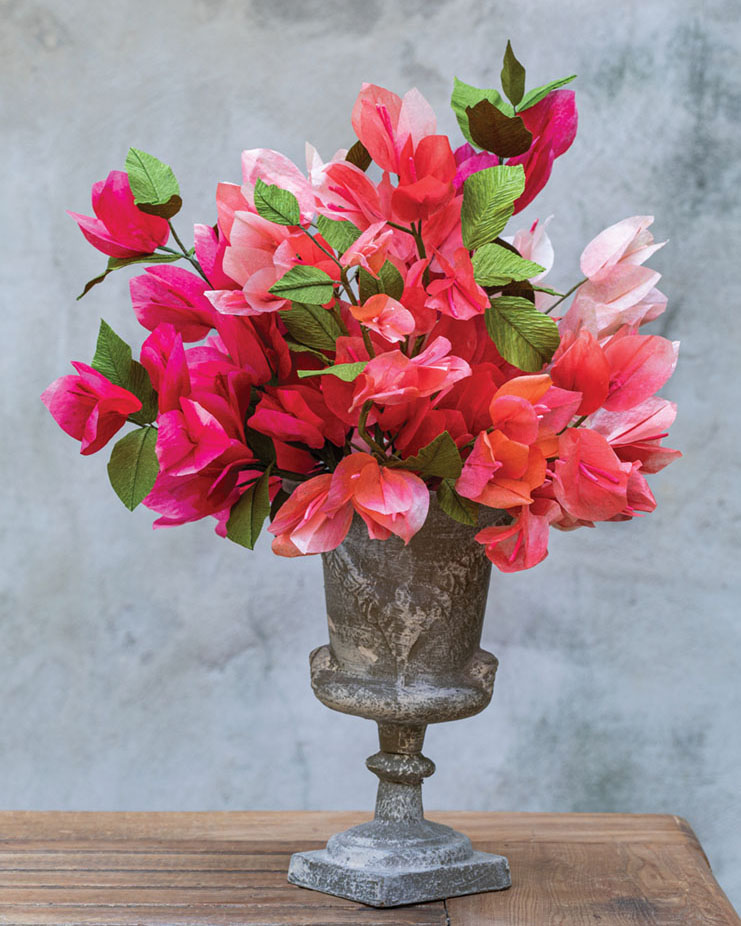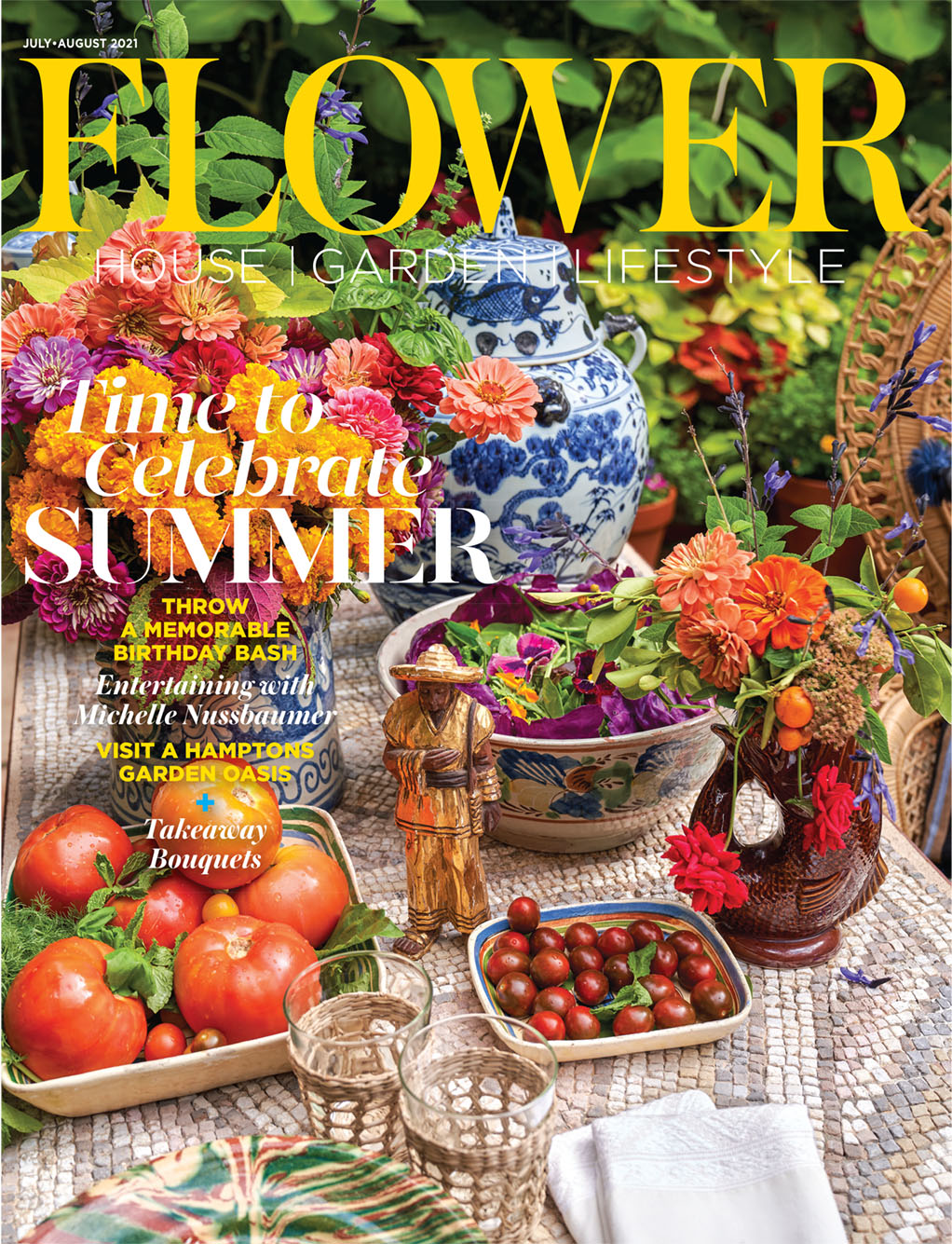
Flower: How long have you been creating paper flowers as a hobby?
Suzonne Stirling: I’ve been dabbling on and off for 20 years, but I began getting serious about them in the summer of 2014. I was grappling with autoimmune disease and burnout, and making them became an act of meditation for me—a way to calm my nervous system.
Later that same year, something clicked and it became a much more joyful experience—the kind of transcendence I had experienced when I made things as a child. When you find something that makes you feel better than whatever afflicts you, you grab onto it with your whole heart.
How was your work discovered?
A few years ago, I was commissioned to create a piece for a magazine. The day after publication, I had my first order, and suddenly I was in business! But I’m really more of an artisan than a businessperson. I sell my flowers and accept commissions, but I don’t see it as a full-time business—mostly because I love it too much to do that.

What do you mean by that?
I want to keep the passion intact. Over the years, I’ve scaled the business aspect up and down, but it’s important for me to find the right balance. Occasionally I’ll need to take a break, but I always come back to making flowers.

I was amazed to learn that you taught yourself how to make paper flowers. Do you have any kind of fine art background?
I am self-taught in all things creative, but I also had the good fortune of having a curious and brilliant grandfather who was a hobbyist. He encouraged me to use my hands to create the things I wanted or imagined, and I’ve always kept that with me.

Tell me about the materials you use and the creation process.
Generally speaking, each one is made using a combination of crepe paper, tissue paper, glue, wire, pastels, watercolors, paint, dyes, bleach, and gouache. I use different papers of different weights for each type of flower. So much variation is possible with just a few materials.
As far as the process goes, I start by dissecting a natural flower to better understand its construction and scale, or I’ll use photographs or botanical drawings to guide me. Once I’ve done that visual research, I dive right in.
Sometimes I get it right immediately; other times I have to work at it until it feels right. The first design could take anywhere from an hour to all day or all week. Subsequent versions of that flower usually move much faster though. The length of time it takes can also depend on the type of flower I’m creating. For example, a gardenia might take me less than an hour, whereas a magnolia might take 6 to 8 hours.
The type of flower also dictates which technique I employ. Sometimes I bleach, dye, paint, or water-dip my paper before construction. Other times, I construct a flower with plain paper and use pastels or paint to finish the details. When I’m making larger flowers, I sometimes layer papers together with glue and wet-sculpt the paper. Smaller flowers might get nothing more than a simple stretch to create movement.

Lots of parts! How do you keep them all together?
Most elements are wired and added to a primary wire stem. Once complete, I bend them to convey a movement or posture that makes them feel most natural.
This certainly sounds like a labor of love for you. Has there been a time when it’s been hard to detach from a piece that sells?
I always take time to photograph the flowers before sending them to their new homes. That part of the process is almost as special and enjoyable to me as making them. When I’ve captured the mood of the flowers in a photograph, then I’m emotionally ready to send them on their way. It’s an individual quirk, but definitely part of my process, even if no one else besides me ever sees the photos.
Do you find that your collectors feel that same connection with their flowers once they receive them?
I do. Often, I’ll get a commission from someone who wants a particular flower as a way to remind them of a happy event or to remember someone they loved or lost. I always feel the weight of that just a bit more.
Suzonne Stirling’s Paper Flowers
By Margaret Zainey Roux | Photography by Sara Essex Bradley | Produced by Amanda Smith Fowler | Paper flowers by Suzonne Stirling, suzonnestirling.com




